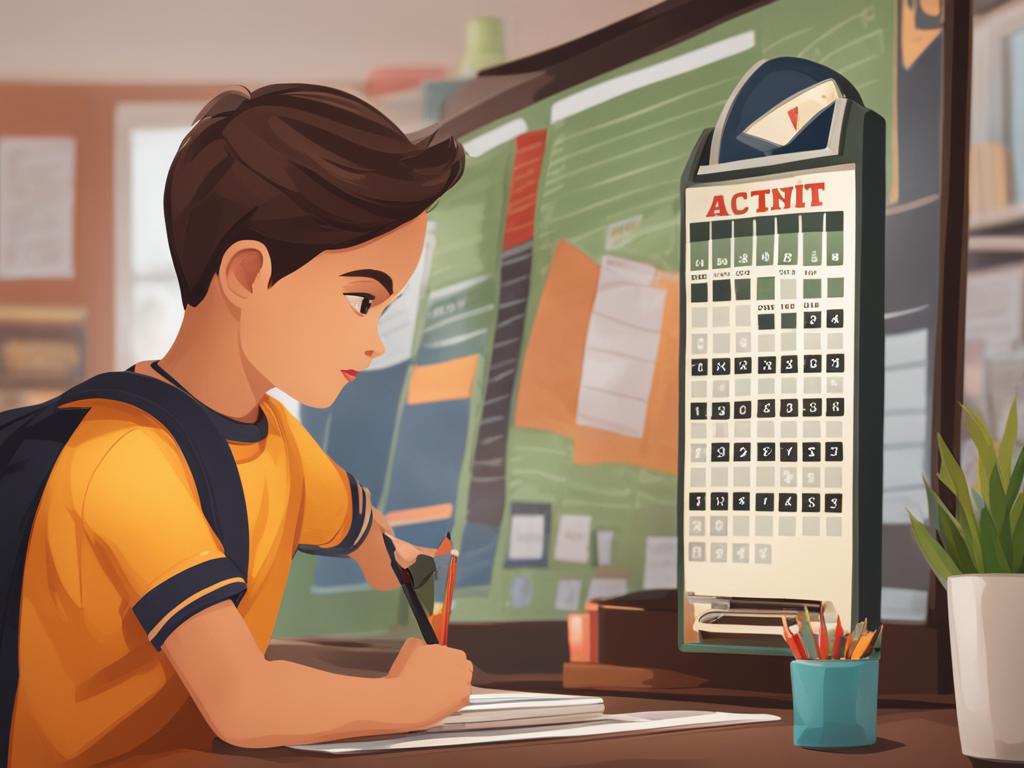

Teaching time management to students is crucial for their productivity and organization skills. By incorporating after school routines and using clocks as teaching tools, students can learn valuable time management strategies. Encouraging estimation, using visuals like timers, setting minimum time limits, incorporating silent time, and incorporating both timed and untimed tasks are effective ways to teach time management. By practicing these techniques, students can better organize their schedules and prioritize tasks, leading to increased efficiency and success in their academic and personal lives.
Key Takeaways:
- Teaching time management skills is essential for students’ productivity and organization.
- After school routines and clocks can be effective teaching tools.
- Encouraging estimation, using visuals, and setting time limits are effective strategies.
- Incorporating silent time and both timed and untimed tasks can improve time management.
- Practicing these techniques helps students better organize their schedules and prioritize tasks.
Importance of Teaching Time Management to Children
Teaching time management skills to children is essential for their long-term success. Research suggests that by teaching children strategies for time management from an early age, they internalize these skills and are better equipped to manage their time effectively throughout their lives. Starting with preschoolers, activities like discussing changing seasons, creating picture schedules, and practicing waiting can help them understand the concept of time and develop time management skills.
For children in grades K to 2, focusing on organization, using visual timers, and setting clear consequences can reinforce time management habits. As children progress to grades 3 to 5, they can learn to estimate time, plan for long-term assignments, and develop effective strategies for breaking down tasks. By teaching time management at a young age, children can develop crucial skills that will benefit them in school and beyond.
Importance of Teaching Time Management to Children
“By teaching time management skills to children, we are setting them up for success in their academic and personal lives. Time management is not only about completing tasks efficiently, but also about prioritizing responsibilities and making the most of every moment. By starting early and consistently reinforcing time management strategies, we can help children develop lifelong habits that will serve them well.”
In conclusion, teaching time management to children is a valuable investment in their future success. By providing them with the necessary tools and strategies, we empower them to take control of their time and maximize their productivity. Whether it’s teaching preschoolers to understand the concept of time or guiding older children to plan for long-term assignments, teaching time management is an essential skill that sets students up for success.
| Grade Level | Time Management Strategies |
|---|---|
| Preschool | Discuss changing seasons |
| Create picture schedules | |
| Practice waiting | |
| K to 2 | Focus on organization |
| Use visual timers | |
| Set clear consequences | |
| Grades 3 to 5 | Estimate time |
| Plan for long-term assignments | |
| Develop effective task strategies |
Strategies for Teaching Time Management to Preschoolers
Teaching time management skills to preschoolers is an important foundation for their future organizational abilities. While preschoolers may not have a concrete understanding of time, there are strategies that can help them develop essential time management skills.
One effective strategy is to discuss changing seasons with preschoolers. By explaining how the weather or activities change with each season, children can begin to grasp the concept of time passing and create a sense of order in their daily routines.
Visual schedules with pictures can also be beneficial for preschoolers. Creating a visual representation of their daily activities helps them understand the sequence of events and develop a sense of structure. This can be done using a simple chart or a series of images that depict each activity.
Another strategy is teaching preschoolers to wait for desired activities or events. By encouraging patience and delayed gratification, children learn to manage their impulses and understand that they can’t have everything immediately. This helps them develop a crucial aspect of time management skills.
| Strategy | Description |
|---|---|
| Discuss changing seasons | Explain how weather and activities change with each season to develop a sense of time passing. |
| Create visual schedules | Use pictures to represent daily activities and help preschoolers understand the sequence of events. |
| Teach waiting | Encourage patience and delayed gratification to help preschoolers manage impulses and develop time management skills. |
By incorporating these strategies into their daily routines, preschoolers can begin building a solid foundation for time management skills that will benefit them as they progress in their academic journey.


| Time Management Tips for Grades K to 2 | Benefits |
|---|---|
| Establish Clear Routines | Provides structure and fosters a sense of responsibility |
| Use Visual Timers | Helps children understand the passing of time and stay focused |
| Teach Task Prioritization | Develops the skill of allocating time wisely and completing tasks in a timely manner |
Conclusion
Teaching time management skills is an invaluable investment in students’ future success. By incorporating effective strategies like estimation, visual timers, setting minimum time limits, incorporating silent time, and teaching the concept of priorities, students can develop the essential skill of time management. These strategies not only benefit students academically but also in their personal lives.
Starting from a young age, teaching preschoolers to understand the concept of time through activities like discussing changing seasons and using visual schedules with pictures sets a solid foundation for time management skills. As children progress to grades K to 2, organizing belongings, using visual timers, and establishing clear routines and consequences reinforce time management habits. These strategies teach children to estimate time, set goals, and prioritize tasks, empowering them with independence in managing their time.
Teaching time management skills does not stop there. Older children can benefit from learning to plan for long-term assignments and develop effective strategies to break down tasks. By incorporating these techniques into their daily routines, students can better organize their schedules, prioritize their responsibilities, and ultimately increase their efficiency and success in both academic and personal endeavors.
So, whether it’s teaching preschoolers the concept of time or guiding older children in effective planning, teaching time management through after school routines and the use of clocks as teaching tools is an essential skill that lays the groundwork for students’ success.
FAQ
Why is teaching time management to students important?
Teaching time management to students is crucial for their productivity and organization skills. By learning time management strategies, students can better organize their schedules and prioritize tasks, leading to increased efficiency and success in their academic and personal lives.
When should we start teaching time management to children?
Teaching time management skills to children at an early age is essential for their long-term success. Research suggests that starting from preschool, children can begin to develop an understanding of time and learn basic time management skills.
What strategies can be used to teach time management to preschoolers?
To teach time management to preschoolers, activities like discussing changing seasons and using visual schedules with pictures can help them grasp the concept of time and create a sense of order. Additionally, teaching them to wait for desired activities or events can help them develop patience and an understanding of delayed gratification.
How can we teach time management to children in grades K to 2?
To teach time management to children in grades K to 2, parents and teachers can help them organize their belongings, use visual timers to understand how time passes, and establish clear routines and consequences to develop a sense of order. Teaching children to estimate time, set goals, and prioritize tasks can also help them become more independent in managing their time.
What are some effective time management strategies for students?
Some effective time management strategies for students include incorporating estimation, using visuals like timers, setting minimum time limits, incorporating silent time, and teaching the concept of priorities. By practicing these techniques, students can develop effective time management habits that will benefit them academically and in their personal lives.






